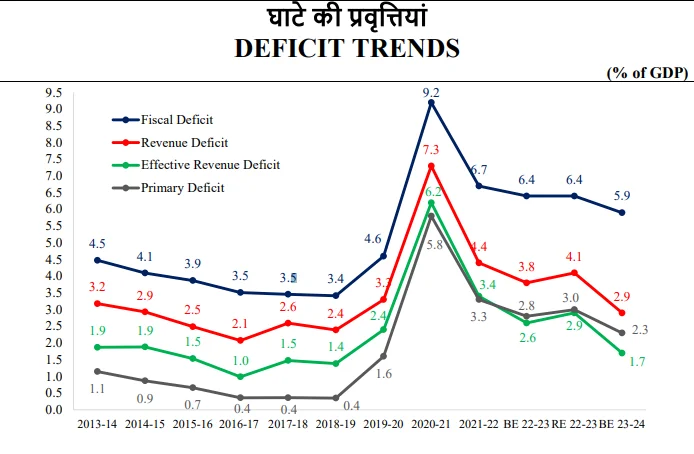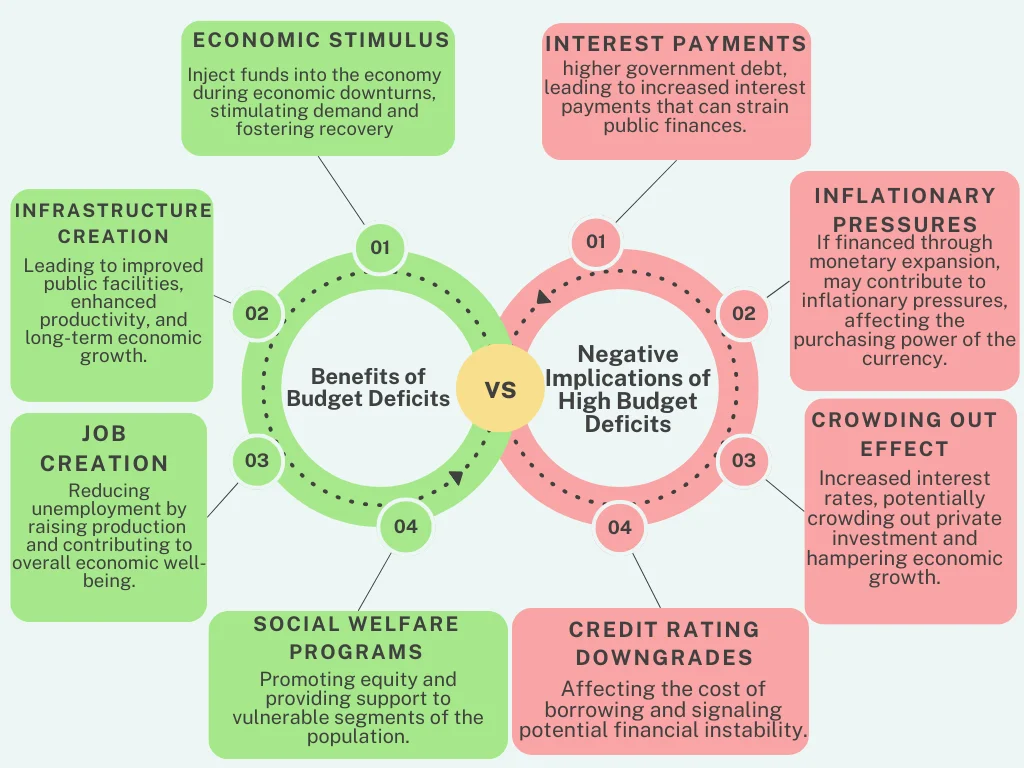![]() March 27, 2024
March 27, 2024
![]() 12251
12251
![]() 0
0
A budget deficit occurs when government expenses exceed revenue. It can be used as an indicator of the financial health of a country. It is a term more commonly used to refer to government spending and receipts rather than businesses or individuals.
When a budget deficit occurs, it means that the current expenses surpass the income generated from regular operations. To correct its nation’s budget deficit, often referred to as a fiscal deficit, a government may cut back on certain expenditures or increase revenue-generating activities.
Here are the different types of deficits and the methods to calculate them.
A. Revenue Deficit
B. Fiscal Deficit (UPSC 2017)
C. Primary Deficit
D. Effective Revenue Deficit
|
Effective Revenue Deficit = Revenue Deficit − Net Grants for Capital Creation |


| Must Read | |
| Current Affairs | Editorial Analysis |
| Upsc Notes | Upsc Blogs |
| NCERT Notes | Free Main Answer Writing |
Monetization of Deficit and Deficit Financing (UPSC 2022)
| Particular | Monetization of Deficit | Deficit Financing |
| Definition |
|
|
| Primary Actor |
|
|
| Mechanisms |
|
|
| Source of Funds |
|
|
| Inflationary Impact |
|
|
| Market Mechanism Distortion |
|
|
| Interest Rates Impact |
|
|
| Exchange Rate Impact |
|
|
| Debt Accumulation |
|
|
| Long-Term Consequences |
|
|
| Examples in History |
|
|
Conclusion
<div class="new-fform">
</div>
Latest Comments